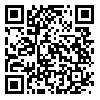1. Hayat AA, Esmi K, Rezaei R, Nabiee P. The relationship between academic emotions and academic performance of medical students of Shiraz university of medical sciences. Research in Medical Education. 2017;9(4):20–9. [Persian] [
Article]
2. Schimmenti A, Passanisi A, Caretti V, La Marca L, Granieri A, Iacolino C, et al. Traumatic experiences, alexithymia, and Internet addiction symptoms among late adolescents: a moderated mediation analysis. Addict Behav. 2017;64:314–20. [
DOI]
3. Pekrun R, Hall NC, Goetz T, Perry RP. Boredom and academic achievement: testing a model of reciprocal causation. J Educ Psychol. 2014;106(3):696–710.
4. Spensieri V, Valastro C, Cerutti R. PO-31: technology addiction and alexithymia features in a sample of Italian adolescents. J Behav Addict. 2016;5(S1):58–9.
5. Li D, Zhang W, Li X, Zhou Y, Zhao L, Wang Y. Stressful life events and adolescent Internet addiction: the mediating role of psychological needs satisfaction and the moderating role of coping style. Comput Human Behav. 2016;63:408–15. [
DOI]
6. Teasdale JD, Moore RG, Hayhurst H, Pope M, Williams S, Segal ZV. Metacognitive awareness and prevention of relapse in depression: empirical evidence. J Consult Clin Psychol. 2002;70(2):275–87. [
DOI]
7. Zhong B, Hardin M, Sun T. Less effortful thinking leads to more social networking? the associations between the use of social network sites and personality traits. Comput Human Behav. 2011;27(3):1265–71. [
DOI]
8. Allen A, Kannis-Dymand L, Katsikitis M. Problematic internet pornography use: The role of craving, desire thinking, and metacognition. Addict Behav. 2017;70:65–71. [
DOI]
9. Fergus TA, Spada MM. Cyberchondria: examining relations with problematic internet use and metacognitive beliefs. Clin Psychol Psychother. 2017;24(6):1322–30. [
DOI]
10. Sangani A, Makvandi B, Asgari P, Bakhtiarpour S. Modeling structural relationships of metacognitive states with tendency to virtual networks through mediating of social adjustment in gifted students. Avicenna J Neuropsychophysiology. 2019;6(3):149–58. [Persian] [
Article]
11. Abdelrahman RM. Metacognitive awareness and academic motivation and their impact on academic achievement of Ajman University students. Heliyon. 2020;6(9):e04192. [
DOI]
12. Reisoğlu İ, Eryılmaz Toksoy S, Erenler S. An analysis of the online information searching strategies and metacognitive skills exhibited by university students during argumentation activities. Library & Information Science Research. 2020l;42(3):101019. [
DOI]
13. Corcoran KM, Segal ZV. Metacognition in depressive and anxiety disorders: current directions. International Journal of Cognitive Therapy. 2008;1(1):33–44. [
DOI]
14. Wells A, Matthews G. Attention and emotion: a clinical perspective. Hove, UK: Erlbaum; 1994.
15. Liu S, Liu M. The impact of learner metacognition and goal orientation on problem-solving in a serious game environment. Comput Human Behav. 2020;102:151–65. [
DOI]
16. Wu L, Liu Q, Mao G, Zhang S. Using epistemic network analysis and self-reported reflections to explore students' metacognition differences in collaborative learning. Learn Individ Differ. 2020;82:101913. [
DOI]
17. Salarifar MH, Pakdaman Sh. The role of metacognitive state components on academic performance. Journal of Applied Psychology. 2010;3(4):102–12. [Persian]
18. Kazempour E, Babapour Vajari M, Asaei SM. The impact of reflective thinking education on students' metacognitive skills. Journal of New Approaches in Educational Administration 2015;5(4):129–52. [Persian] [
Article]
19. Spada MM, Marino C. Metacognitions and emotion regulation as predictors of problematic internet use in adolescents. Clinical Neuropsychiatry. 2017;14(1):59–63.
20. Hashemi Nosratabadi T, Bahadori Khosroshahi J. Prediction of internet addiction based on the alexithymia, positive and negative academic emotions and self-control in students. Culture in The Islamic University. 2018;8(1):51–70. [Persian] [
Article]
21. MohammadKhani S, Zafarpanahi M. Negative emotions and pathological internet use: the mediating role of metacognitions. Research in Psychological Health. 2011;5(1):34–46. [Persian] [
Article]
22. Chiu SI. The relationship between life stress and smartphone addiction on taiwanese university student: a mediation model of learning self-efficacy and social self-efficacy. Comput Human Behav. 2014;34:49–57. [
DOI]
23. Agbaria Q. Internet addiction and aggression: the mediating roles of self-control and positive affect. Int J Ment Health Addiction. 2021;19(4):1227–42. [
DOI]
24. Rastgar S, Abdollahi MH, Shahgholian M. Internet addiction social intimacy and happiness in college students. Journal of Developmental Psychology. 2014;11(42):159–68. [Persian] [
Article]
25. Fredrickson BL, Losada MF. Positive affect and the complex dynamics of human flourishing. Am Psychol. 2005;60(7):678–86. [
DOI]
26. Isen AM, Reeve J. The influence of positive affect on intrinsic and extrinsic motivation: facilitating enjoyment of play, responsible work behavior, and self-control. Motiv Emot. 2005;29(4):295–323. [
DOI]
27. Arsenio WF, Cooperman S, Lover A. Affective predictors of preschoolers' aggression and peer acceptance: direct and indirect effects. Dev Psychol. 2000;36(4):438–48.
28. Creswell JW. Controversies in mixed methods research. In: Denzin NK, Lincoln LS; editors. The Sage handbook of qualitative research. 4th edition. London: Sage Pub; 2011.
29. Kalantari R, Jafari A. Rabeteye beyne ehsase tanhaei ba mizane estefade danesh amoozan az fazaye majazi [The relationship between loneliness and students' use of cyberspace]. In: International Congress of Educational Sciences and Psychology and Healthy Lifestyle [Internet]. Tehran, Center for Cultural and Social Skills Empowerment; 2016. [Persian]
30. Pekrun R, Goetz T, Frenzel AC, Barchfeld P, Perry RP. Measuring emotions in students' learning and performance: The Achievement Emotions Questionnaire (AEQ). Contemp Educ Psychol. 2011;36(1):36–48. [
DOI]
31. Kadivar P, Farzad V, Kavousian J, Nikdel F. Validiting the Pekruns achievement emotion questionnaire. Educational Innovations, 2010;8(4):7–38. [Persian] [
Article]
32. O'Neil HF, Abedi J. Reliability and validity of a state metacognitive inventory: potential for alternative assessment. J Educ Res. 1996;89(4):234–45. [
DOI]
33. Simon HA. Motivational and emotional controls of cognition. Psychol Rev. 1967;74(1):29–39. [
DOI]
34. Kober H. Emotion regulation in Substance Use Disorders. In: Gross JJ; editor. Handbook of emotion regulation. New York, NY: The Guilford Press; 2014.
35. Wan CS, Chiou WB. Psychological motives and online games addiction: atest of flow theory and humanistic needs theory for taiwanese adolescents. Cyberpsychol Behav. 2006;9(3):317–24. [
DOI]





